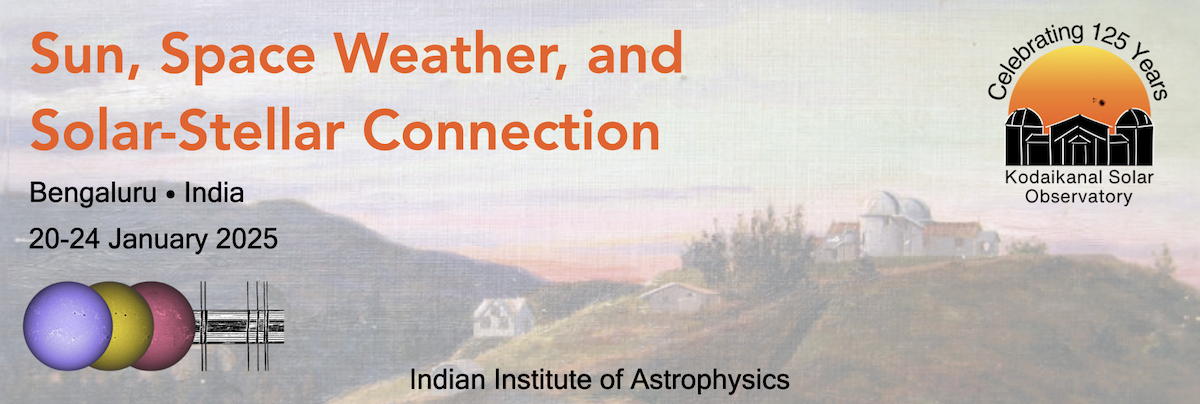Speaker
Description
We have performed time-series analysis of sunspot number (SSN) and solar radio flux at five different frequencies (1000 MHz, 2000 MHz, 3750 MHz, 9400 MHz, and 17000 MHz) observed during solar cycles 20-24 (i.e., from 1964-10 to 2019-11; ≈ 55 years). We measured the Pearson correlation coefficient between SSN and solar flux density measured at the aforementioned frequencies and found a maximum correlation ≈ r = 0.93 at 2000 MHz. However, r value decreases either side of 2000 MHz and minimum was observed at 17000 MHz. Further, from this time-series data, the LS periodogram is derived for combined as well as individual cycle data. Based on LSP analysis, we found rotational periods (26-29 days) in all data sets except at 17000 MHz. We also detected Rieger type periods in all frequencies in the range of 155-190 days except at 1000 MHz. In addition to the rotational and Ri´ger type periods, we found other short-term periods (37-100 days), intermediate periods (200-300 days), annual periods (≈ 365), quasi-biennial periods (475-730 days), and other long-term periods (> 730) as categorized in (Aroori et al., 2021). For the individual cycles, the Lomb-Scargle (LS) spectrum presents variation of the significant periods in Rieger, annual and quasi-biennial range from cycle to cycle. This variation may be related to the variation of the solar activity from cycle to cycle and from large to small scale. The combined LS spectrum of all the cycles exhibits significant periods in all period bands and they are largely consistent with each observations as well as sunspot number.
| Contribution Type | Poster |
|---|---|
| Theme | Solar Magnetism over Long-Time Scales |

